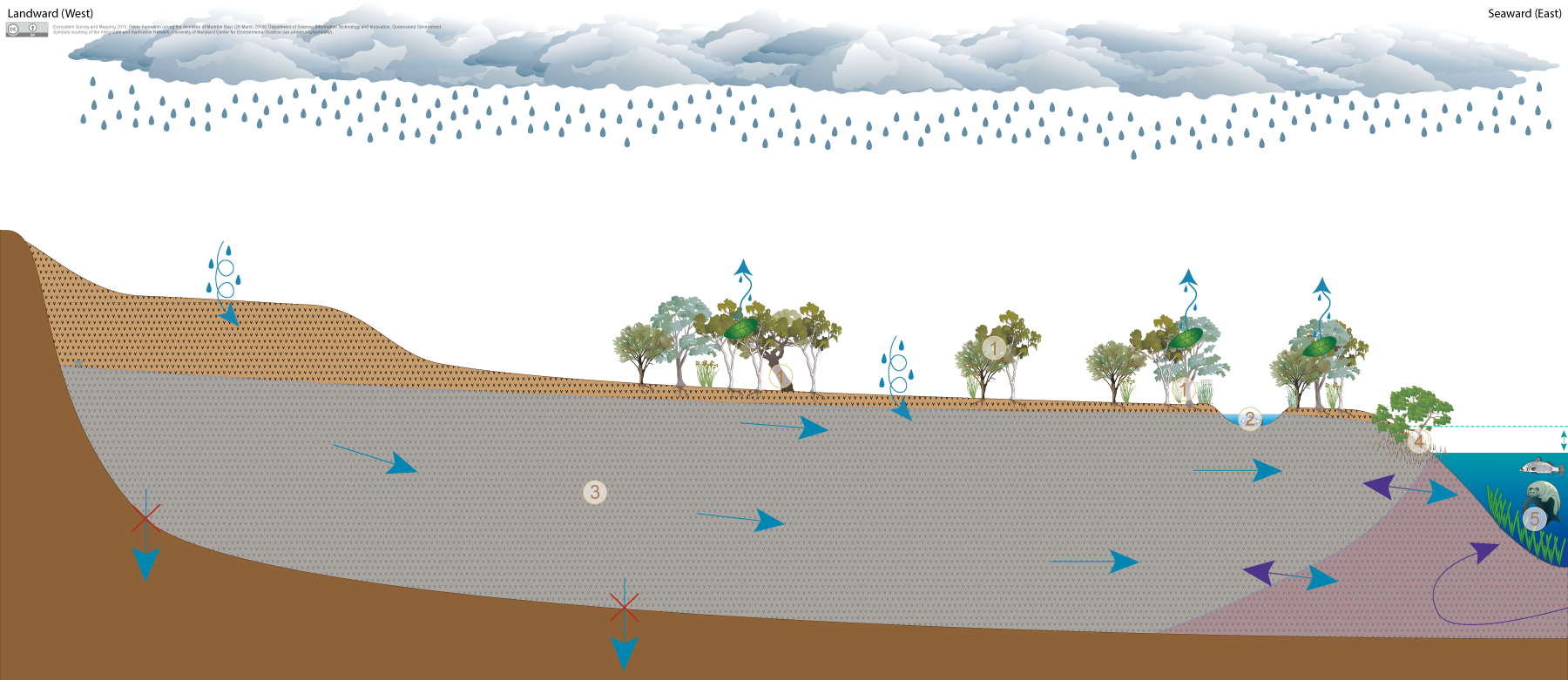|
|
Petrie Formation along the shoreline of Moreton BayPetrie Formation along the shoreline of Moreton Bay
Click on elements of the model or select from the tabs below Weathered basalt of the Petrie Formation in coastal areas (Redland basalt) is moderately to highly permeable and may form aquifers which store and transmit groundwater through vesicles, fractures and weathered zones. Vertical groundwater movement from a basalt aquifer is often restricted by underlying unweathered bedrock which may have lower permeability. While groundwater will often continue to leak through the less permeable rock to some degree, typically groundwater moves laterally and can be discharged to the surface or offshore along the contact between weathered basalt and underlying less permeable rocks. Where deeply weathered Petrie basalt occurs along the shoreline of Moreton Bay it usually supports a shallow water table, and groundwater often discharges into near-shore marine environments of Moreton Bay. A range of ecosystems may depend on groundwater within these unconfined, basalt aquifers to support their plant and animal communities, ecological processes and delivery of ecosystem services:
Pictorial conceptual model PDF Additional links
Last updated: 18 December 2015 This page should be cited as: Queensland Government, Queensland (2015) Petrie Formation along the shoreline of Moreton Bay, WetlandInfo website, accessed 25 June 2024. Available at: https://wetlandinfo.des.qld.gov.au/wetlands/ecology/aquatic-ecosystems-natural/groundwater-dependent/petrie-formation-along-the-shoreline-of-moreton-bay/ |

 — Department of Environment, Science and Innovation
— Department of Environment, Science and Innovation

